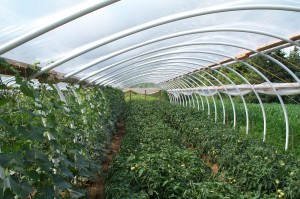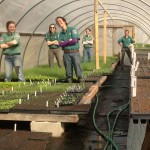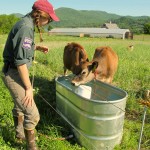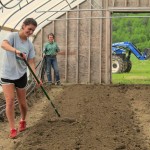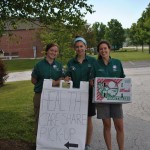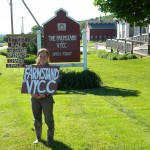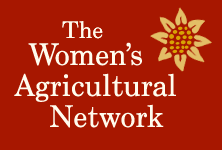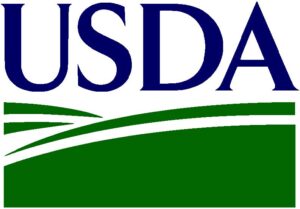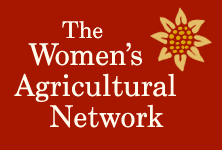As the seasons are changing here in Vermont with more summer-like weather arriving, the season of my life is changing also. I have greatly enjoyed my time here in Vermont, largely because of working with great people such as those reading this blog post! (By the way, my apologies to those of you that also read the UVM Extension New Farmer blog and have read a similar post from me, but I wanted to make sure I shared this info with anyone interested.) I have learned a great deal from all of you and want to thank you all for your support during this season of my life here in Vermont! 
However, with the passing of my father 2.5 years ago, the arrival of our first child 1.5 years ago, and the anticipated arrival of our second child in October, I really felt the need to move closer to my family (in South Dakota). So, I will be leaving UVM Extension at the end of June to start a similar position in Extension Food Safety with Kansas State and the University of Missouri in Kansas City. We will now be less than a 7 hour drive from my family (which is not much in the Great Plains states :)), rather than 28 hours of driving as we are currently.
It sounds like UVM Extension will have someone fill the position on some sort of interim basis while they decide how to fill the position on a long term basis. I dont have any details to share on that yet, so in the interim, these are some food safety resources that you can utilize if you have food safety questions:
– There are a number of fact sheets on various food safety topics ranging from farmers market vendor safety to selling prepared foods on the farm to meat licensing requirements. They are all available in the Publications section of the UVM Extension Food Safety website.
– In the Resources section of that same website, there are a number of links available, including links to the State regulatory agencies and other state resources, some regional food safety websites, as well as federal food safety information. There are also links to audio files, video clips, and webinars on various food safety topics, ranging from food safety regulations, best practices (GMPs) for food safety in value-added foods to food labeling.
– There is also a great deal of food safety information from various agencies in Vermont available on the Vermont Food Safety Task Force website. On the website you can learn more about the task force, find food safety training opportunities in Vermont, read the latest food safety news from the state and national level, and access a number of great resources. These resources include templates for processors and producers to develop Good Manufacturing Practices and related food safety plan materials, lot tracking templates and information, state, regional, and national website links, potential funding resources, and consumer food safety information. The website also contains links to food safety regulations, information on the FDA Food Safety Modernization Act, and meeting information of the Food Safety Task Force.
– If you are interested in the safety of home food preservation or other consumer food safety issues, more information is available on the UVM Extension website. 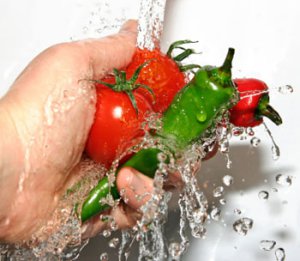
– Any questions on fresh whole produce safety? More information is available from UVM Extension’s Produce Safety pages.
Thanks to all of you for all your support during this beautiful season of my life here in Vermont, and thanks for your understanding as we transition to our next season in Kansas City!

